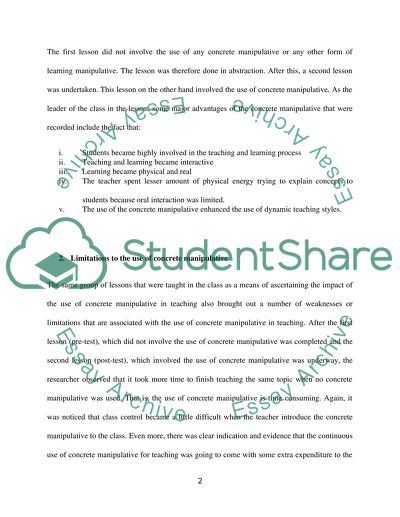Cite this document
(“Differences Between Concrete and Virtual Manipulatives in Preparing Thesis - 1”, n.d.)
Differences Between Concrete and Virtual Manipulatives in Preparing Thesis - 1. Retrieved from https://studentshare.org/education/1401332-differences-between-concrete-and-virtual
Differences Between Concrete and Virtual Manipulatives in Preparing Thesis - 1. Retrieved from https://studentshare.org/education/1401332-differences-between-concrete-and-virtual
(Differences Between Concrete and Virtual Manipulatives in Preparing Thesis - 1)
Differences Between Concrete and Virtual Manipulatives in Preparing Thesis - 1. https://studentshare.org/education/1401332-differences-between-concrete-and-virtual.
Differences Between Concrete and Virtual Manipulatives in Preparing Thesis - 1. https://studentshare.org/education/1401332-differences-between-concrete-and-virtual.
“Differences Between Concrete and Virtual Manipulatives in Preparing Thesis - 1”, n.d. https://studentshare.org/education/1401332-differences-between-concrete-and-virtual.


